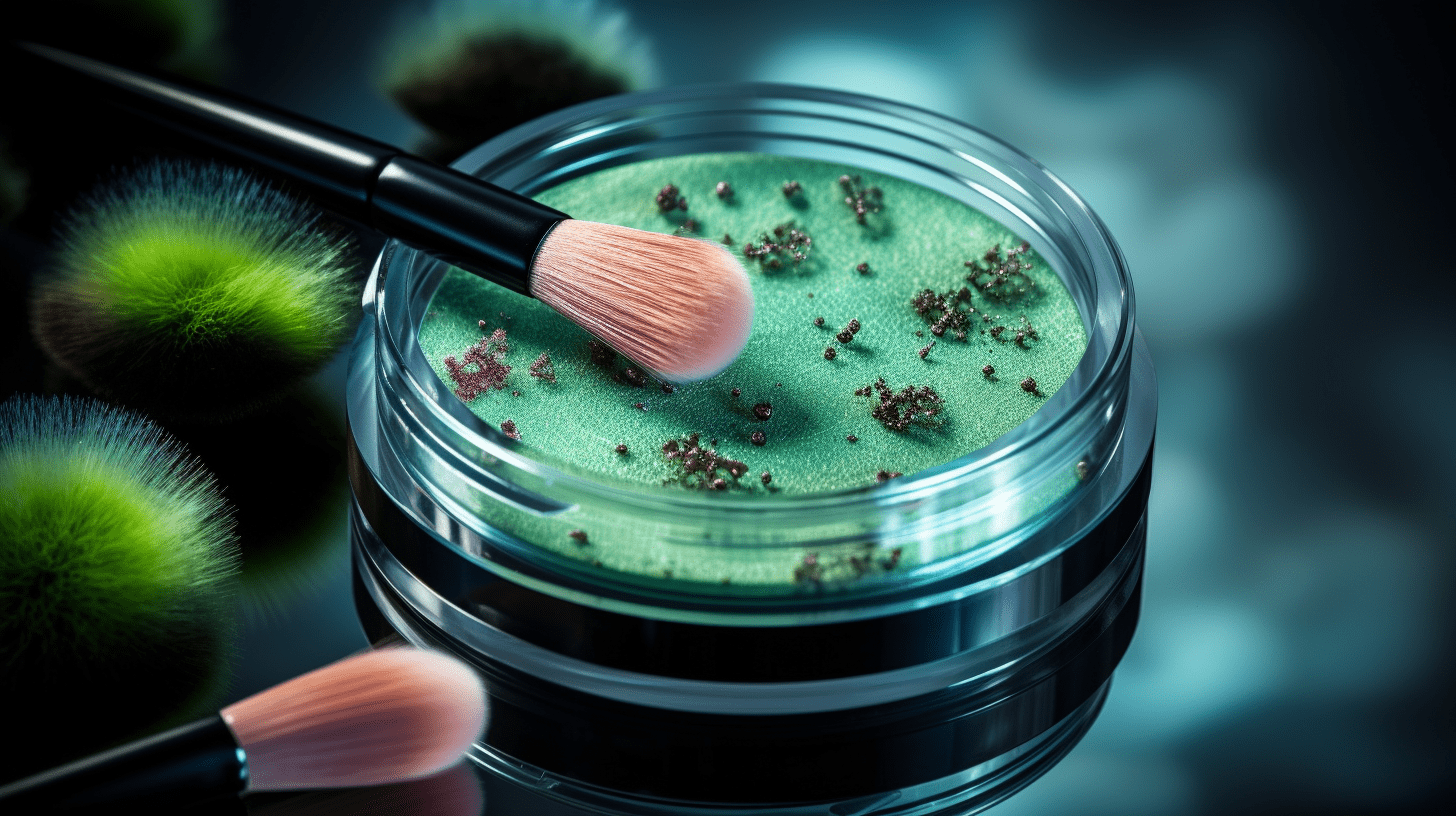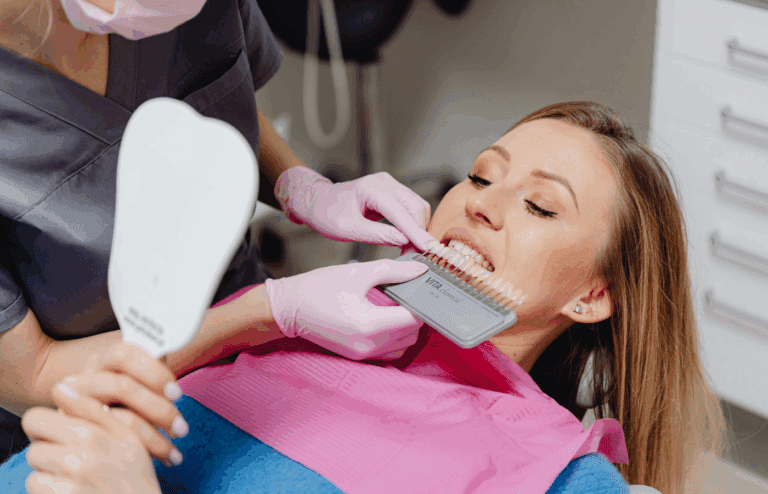The next time you apply makeup, there’s something you should know… Researchers have discovered makeup brushes can be dirtier than toilet seats. Frequently used brushes have loads of germs and microbes living on them. Even worse, these can lead to devastating skin infections.
But there’s no need to throw them all out. In this article, we will explain how to clean your brushes properly.
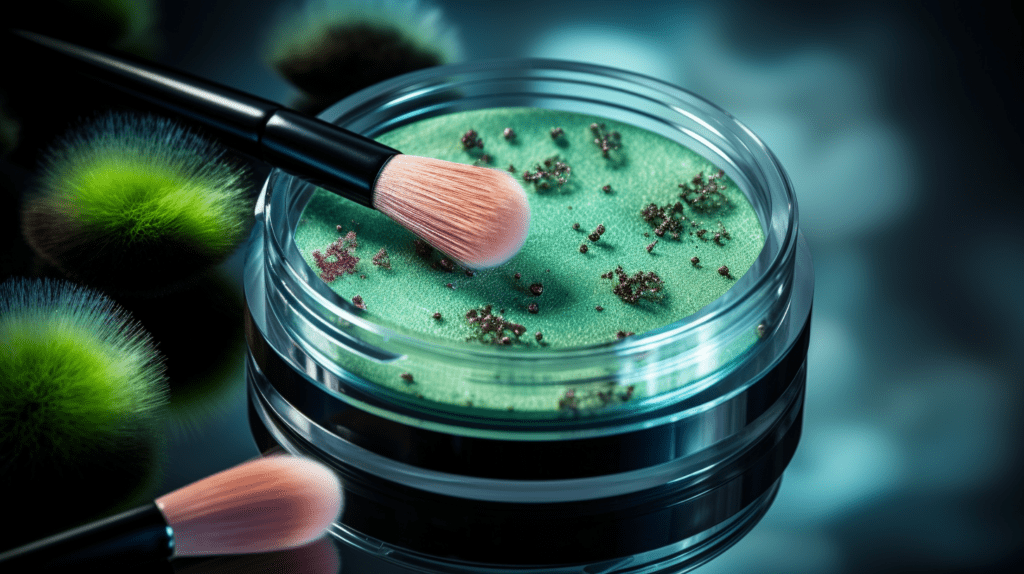
Read More: Luxury Cosmetics That Will Step Up Your Makeup Routine
A Fungus Among Us: The Germs Living on Your Makeup Brushes
A group of researchers from the United Kingdom recently completed a study whose results left them stunned. They took microscopic photos which revealed that typical makeup brushes are loaded with germs.
The objective of this study was to determine how contaminated cosmetic accessories can become after a few uses. Another goal was to determine how quickly germs can accumulate if these accessories aren’t regularly cleaned and sanitized.
The researchers took samples from twelve makeup applicators. They analyzed each under a microscope. Next, they took pictures of each vial.
As the saying goes, the results were enough to gag a maggot.
“It’s awful to see the amount of bacteria that could potentially sit on a makeup brush,” said Dr. Suhail Alam, medical director at the Aventus Clinic which conducted the research, the New York Post reported.
The results captured by the photos were a gallery of horror. One eyeshadow brush was completely overgrown with fuzzy blue and green mold. A foundation brush had blotches of blood-red bacteria. All total, the scientists counted 4,364 colonies of yeast and bacteria. They said eleven of the brushes were filthier than the average toilet seat.
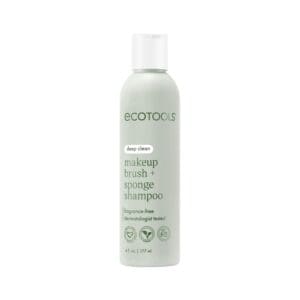
Product Info
The EcoTools brush shampoo effectively removes makeup, dirt, oil, and other impurities from your makeup tools – without all the harsh chemicals.
52,500+ Reviews
One eyeshadow brush had 928 combined colony-forming units. A blusher brush had 697.5 combined colony-forming units. A tube of lip gloss had 625 combined colony-forming units.
The researchers warned that these makeup accessories were essentially germ incubators that could be spreading infection.
Cosmetic Accessories are “Dirtier Than Toilet Seats”
In view of the results, the researchers urged the necessity of regular cleaning and sanitation of makeup accessories.
“Even after a person uses a makeup brush for the first time, it will already be forming colonies of bacteria,” warned Dr. Alam. “With daily use, the brushes will automatically start collecting dirt, pollutants, oil, and dead skin cells, which is why make-up brushes act as a breeding ground for bacteria which can lead to breakouts and skin irritations.”
“If a contaminated brush comes into contact with the eye, this could cause infections or allergic reactions,” Dr. Alum continued, stressing that contamination “can be avoided with a weekly cleaning routine.”
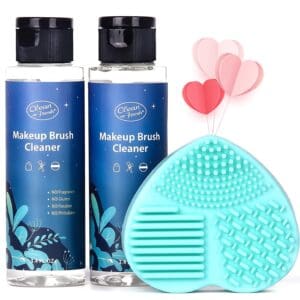
Product Info
Two Clean-n-Fresh 3.4oz makeup brush cleaner bottles and a makeup brush cleaning mat.
3,300+ Reviews
Dr. Alum’s Tips for Cleaning Makeup Brushes
“To clean the brushes properly, we suggest lathering the brush in an appropriate skin cleanser,” the doctor instructed.
He said the best technique for cleaning brushes is by “Massaging any bristles in the palm of your hand thoroughly, rinsing with lukewarm water, and then squeezing the brush to remove any excess moisture.”
“The more you clean your brushes, the less dirt seeps out of the bristles, but this is a good thing,” Dr. Alum added. “So don’t stop cleaning your brushes regularly if you find this to be the case!”
Read More: Unlocking Beauty’s Secrets: The Magic of a Cosmetology Degree
7 More Tips for Cleaning Makeup Brushes
Here are seven tips from dermatologists on how to clean your makeup brushes and remove bacteria effectively.
1. Rinse the Tip to Remove Residual Makeup First
Start by rinsing only the tip. The idea is to remove any residual makeup on the surface.
You want to avoid submerging the whole brush, as the liquid will eventually dissolve the glue that keeps the brush head connected to the handle.
2. Prepare Gentle or Clarifying Shampoo
Soap and water can dry out the bristles of your brushes. Instead, dermatologists recommend using either gentle shampoo or clarifying shampoo.
Fill a bowl with lukewarm water and add a tablespoon of clarifying or gentle shampoo.
3. Swirl the Brush Tip in a Bowl
Again, avoid submerging your brush in the water.
Using the lukewarm bowl of shampoo you prepared in the previous step, swirl the tip of your brush in the bowl. If you want to work up a good lather, you can also gently massage the tip of the brush in the palm of your hand.
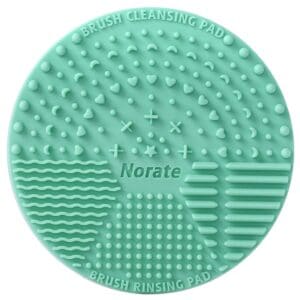
Product Info
Silicon makeup brush cleaner mat with suction cups. Just pour solution on the mat and gently move your makeup brush to clean.
28,000+ Reviews
4. Rinse
Rinse the tip of your brush under running water.
5. Repeat Wash-Rinse Cycle
Your brush is not clean until the water runs clear from the brush.
Repeat the steps of swirling the brush tip and the bowl of shampoo and then rinsing under clear water. When your brush is completely clear, the process is finished.
6. Dry with a Paper Towel
The best method for drying your brush is to squeeze out the excess moisture using a clean, dry paper towel.
Use a gentle technique for squeezing. You don’t want to work the brush between your fingers and cause the bristles to wear out or come loose.
7. Allow to Air Dry
Lay down a towel on a counter. Position your brushes lying flat, with the tips hanging off the edge of the counter so that air can swirl all around them.
Do not dry your brush in an upright container. This allows water to run down the bristles, which will loosen the glue that connects them to the handle.
Read More: The Best Viral TikTok Beauty Products

